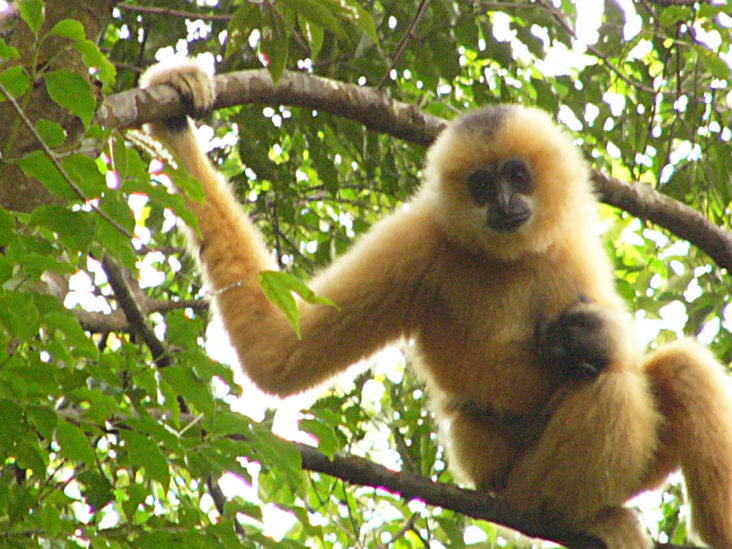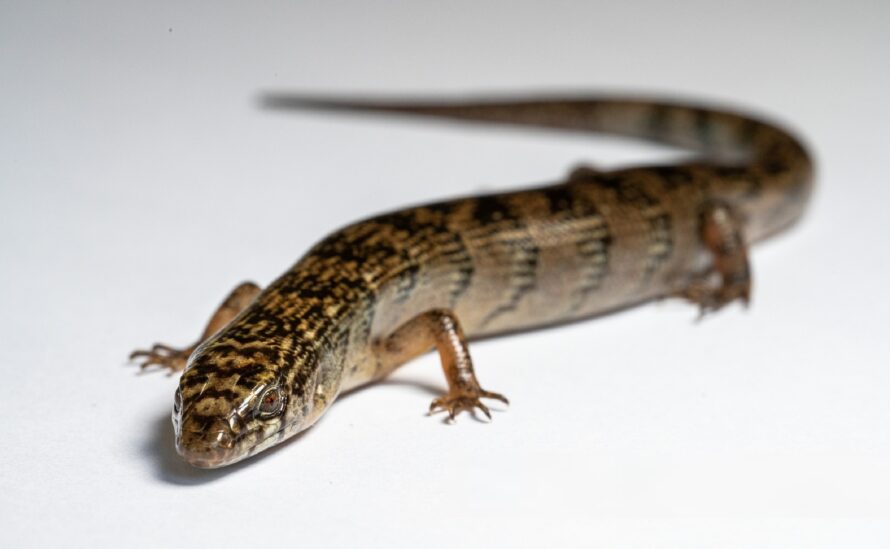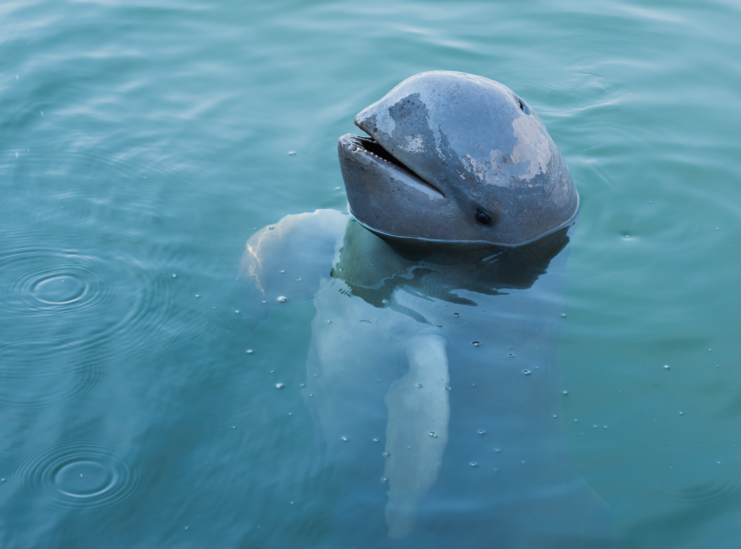10 Endangered Island Species Protected by Seacology Projects
Islands are home to plants and animals found nowhere else in the world. However, the incredibly specialized biodiversity of islands makes them uniquely vulnerable to habitat change and loss.
Seacology’s win-win approach to conservation offers tangible benefits for both island communities and creatures. Here are just a few of the island species our projects have helped protect:
Javan leopard (Indonesia)
This big cat is found only among the lush forests of the Indonesian island of Java. However, Java has one of the highest population densities in the world, and much of its natural forests have been cleared for cropland. It’s estimated that only about 500 Javan leopards are left in the wild—and their cousin, the Javan tiger, has already gone extinct.
Seacology has partnered with several Javan villages to help provide the resources they need to care for both their forests and their communities. Our recent project in Cikidang Village helps villagers preserve and monitor 288 acres of tropical forest and encourage new growth by planting native tree seedlings. So far, Seacology projects have helped protect over 7,000 acres of forest on Java, giving the fragmented populations of leopards more room to roam.

Hainan gibbon (China)
The Hainan gibbon is the rarest primate in the world, found only in one forest reserve on Hainan Island, China. When Seacology began working with the four villages close to the reserve in 2003, only 13 gibbons remained. Villagers were struggling to make a living, and many could not afford to send their children to primary school. They would cut down trees in the reserve, and there was very little cooperation between the villagers and the park rangers.
Seacology, working with zoological societies from Shanghai and Paris, funded 719 scholarships for children in 250 families. Relationships between local villagers and park rangers dramatically improved, and environmental education was integrated into the schools. In December 2006, the Chinese government abolished tuition fees for children in rural areas, and the seeds of conservation continued to grow.
In 2020, the gibbons’ population had risen to more than 30, and a new breeding pair was spotted, signaling a new era of hope for these critically endangered creatures.
Jaragua galliwasp (Dominican Republic)
Seacology has had some amazing wins, but it’s not every day we can say we were involved in the discovery of a new species! In 2022, biologist Miguel Landestoy and his colleagues observed a medium-sized brown lizard near Oviedo Lagoon as part of a survey organized by Grupo Jaragua, Seacology’s project partner for our ambitious nationwide initiative to protect mangroves in the Dominican Republic.
This was not only a species new to science, but also the only known member of a brand new genus. So far, the Jaragua galliwasp has only been recorded only in Oviedo Lagoon. The lizard, as a newly discovered species, isn’t yet classified as threatened or endangered, but it’s possible that if this little patch of habitat disappears, it could go extinct. Seacology has worked with local partners to promote sustainable tourism and fight poaching in the lagoon since 2017.
Bornean elephant (Malaysia)
Bornean elephants are the smallest subspecies of elephant in the world, with adults usually only growing to about eight feet tall. But they are the largest animals on the island of Borneo, and require large swathes of forest territory to thrive. Logging and agriculture have fragmented the forests, forcing the wild elephant populations to come into more dangerous contact with humans. In the Malaysian state of Sabah, where many Bornean elephants live, 60% of viable habitat has been lost in the last 40 years.
Seacology has supported many projects on Borneo to help local communities protect, nurture, and benefit from healthy natural ecosystems. For example, our work in Langkabong Village is one of a series of watershed projects that preserves important habitats and enables local access to clean drinking water. The citizens of Langkabong are protecting 840 acres of forest in the mountains of Sabah, an especially significant location upstream from the Kinabatangan Wildlife Sanctuary. Kinabatangan is home to the Borneo Elephant Sanctuary Programme, a refuge specifically designed for sick and injured elephants.

Golden-crowned flying fox (Philippines)
The golden-crowned flying fox is one of the largest bats in the world, and is found only in the Philippines. The bats have an astounding five-foot wingspan and live on a diet of almost nothing but figs. These endangered creatures are particularly sensitive to human disturbances; if there’s too much noise or activity around their nest sites, they will abandon their pups.
In our project on Suyac Island, the community of Taba-ao permanently protects a 37-acre mangrove area in the Sagay Marine Reserve, where many of these giant bats live. The residents monitor the mangroves, haul away trash weekly, and count the flying foxes monthly, reporting the data to the Department of Environment and Natural Resources. In 2012, the flying fox population in the area was about 1,000. In August 2023, over 8,000 were counted.
Irrawaddy dolphin (India and Southeast Asia)
Irrawaddy dolphins almost look more like baby beluga whales than dolphins. These endangered animals are typically shy creatures, but they have been known to develop relationships with humans. Fishers using traditional methods will alert the dolphins that they are about to cast a net by tapping the sides of their boats. A pod of cooperative dolphins may then circle a school of fish, driving them toward the net—and eat the fish that get confused by the commotion.
Chilika Lake, on the Bay of Bengal, is home to most Indian Irrawaddy dolphins. Seacology has worked with communities on islands dotted around the lake, including Berhampur and Mahinsha Islands, to protect Chilika’s critical mangrove environment and promote conservation education. Support from Seacology has helped reduce illegal fishing in the lake, with over 300 local fishers helping to protect the Irrawaddy dolphins and stabilize the fish population.

Titicaca grebe (Peru)
This flightless bird makes its home in—and gets its name from—Lake Titicaca in the Andes Mountains. It has a distinctive reddish color pattern and ornamental plumes, and feeds mainly on small fish by diving in the lake. The grebe, like many other endangered species, is threatened by pollution and habitat degradation, among other factors.
Seacology’s project on Amantani Island, one of many in this largest lake in South America, works with the island’s indigenous community to reduce environmental threats and restore healthy habitats. The community has implemented trash cleanups, better recycling practices, and organic agriculture without pesticides. They also built an interpretive center to showcase educational materials for visitors, including warnings against harming the endangered Titicaca grebe by taking eggs or inadvertently trampling their nests.

Orangutans (Malaysia and Indonesia)
Orangutans live in the magnificent rainforests of only two islands in the world: Borneo and Sumatra. Logging, mining, plantations, poachers, climate change, and a reduction of genetic diversity have contributed to the three species of orangutan (Bornean, Sumatran, and Tapanuli) being classified as critically endangered. All three species could go extinct within the next decade.
Seacology is working hard with indigenous communities to avert that potential tragedy. For example, in 2019 in Tiga Bundu, we launched a project helping Dusun people protect 5,548 acres of rare virgin tropical rainforest for 15 years, including some of the last remaining orangutan habitat in their part of the island. The community told us that the project is “strengthening our community effort to continue to protect, manage, and use sustainably our resources within our Ancestral Land.”
Pacific Leatherback Sea Turtle (Pacific Ocean)
While sea turtles aren’t found solely on islands, many sea turtle nesting beaches are located on islands, and are threatened by coastal development, among other risks. Seven species of sea turtles can be found around the globe, and our project on Montecristo Island in El Salvador helps protect four of them: olive ridley, hawksbill, green, and leatherback. Among these, the Pacific leatherback is considered the most endangered marine turtle subpopulation in the world, with an estimate of only 2,300 adult females remaining in the wild.
In 2022, Seacology funded construction of a turtle egg hatchery, an awareness campaign, and livelihood support on Montecristo. The project was a big success: 145,890 hatchlings were released. Building on that success, an additional grant in 2023 enabled our project partner Asociación Mangle to improve the hatchery and expand awareness and educational campaigns.

Lemurs (Madagascar)
Lemurs live only on the island of Madagascar, a place unlike any other on Earth. Nearly 100 species of lemur can be found here, ranging from tiny mouse lemurs to the 20-pound indri—and they are among the world’s most endangered animal groups. Seacology has worked on many projects in Madagascar over the last 25 years to support and protect the inhabitants of this unique island.
For example, Ankarafantsika National Park is home to eight species of lemurs, including the critically endangered mongoose lemur. Seacology began working with local NGO Planet Madagascar to protect the park’s critical habitat in 2021. Community members from nearby Andranohobaka Village now patrol the 2,686-acre forest; maintain a miles-long firebreak that stops fires in the neighboring savannah from spreading; and have planted about 15,000 tree seedlings.
Supporting Critical Island Conservation
The key to Seacology’s success stories with endangered species has always been in creating true partnerships with island communities.
In his acceptance speech, 2023 Seacology Prize winner Dr. Jonah Ratsimbazafy of Madagascar urged his audience to understand the importance of listening respectfully to indigenous people. “Conservation is always difficult when people have little access to food, to education, and to health care,” he said. “Before we can accomplish anything, we ought to build first the foundation of trust. Then the partnership can lead to the success of our mission.”
If you would like to learn more about Seacology’s mission and projects, you can sign up for our newsletter. You can also donate to support critical conservation work on islands around the world.






